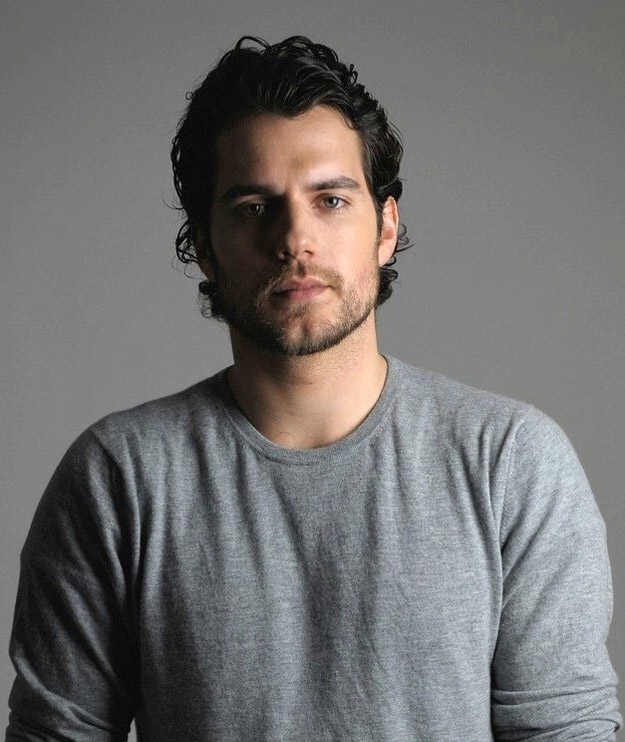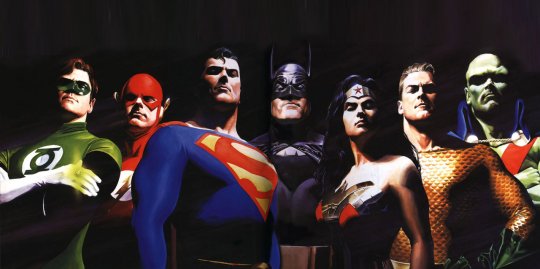
Maybe it was Brandon Routh's turn as a gay pornstar (and Justin Long's lover) in Zack and Miri that prevented him from reprising the role of Superman. Whatever. Here's your new Man of Steel. I'm not impressed. Unless one of Superman's new powers is to piss me off, because if it is, that's really amazing.
Henry Cavill (left) will be the next actor to play Clark Kent/Superman in a feature film. According to comingsoon.net, the film is aiming for a December 2012 release. That’s about all the information available other than Zach Snyder (300, Watchmen) is directing and Christopher Nolan helped with the script.
The reason Superman movies ultimately fail is because he is boring. His entire history is an anachronism since newspapers are on life support and the boy scout angle is not only unbelievable, but also irritating as the world has loosened its moral standards on just about everything. It doesn’t matter how well Ma and Pa Kent raised you in 2011. If you’ve got an internet connection, you’ll learn eventually. Hey, DC Comics! Marvel’s film productions are crushing you. Figure it out. Justice League of America movie, bitches!

I'm a Marvel guy and even I know that the JLA would kill the Avengers.
There’s an inherent problem with the Justice League of America that has always made it difficult to envision an on-screen version: the main seven characters (left) are from such different worlds that it’s hard to come up with a believable scenario in which they’d all come together. The Avengers never had this problem because most of the time, the team was comprised of lesser characters who were only Avengers. The Wasp and Ant Man didn’t really have a whole lot going on outside of whatever Captain America told them to do. The JLA, though? Each of them essentially had their own “territories” (L to R: Coast City/Earth in general, Keystone City, Metropolis/Earth in general, Gotham City, where ever the Amazons live, the entire ocean, where ever Martian Manhunters roam) to protect. Still, someone should get on this. Or hire me to get on it. I’d come pretty cheap. Aside: I saw a 300-plus pound man in a Flash t-shirt yesterday. My intention is not to be cruel, but the first thought that popped into my head was “Oh, the irony.” And then I said what would possibly be the most ironic t-shirt I could wear and I settled on something with dollar signs on it.

A dye job, a couple of piercings, a hunger strike, and a cigarette dangling from the lips and I guess she could pull of Lisbeth Salander.
I’m about 200 pages into the final book of Stieg Larsson’s Millennium Trilogy, The Girl Who Kicked the Hornets’ Nest. I started reading the book primarily on the indirect recommendation of a friend. She and I were playing a game of Words With Friends. I made an observation that she seemed to make movies near or after midnight on work nights. She said she was a night person. I asked what the hell would possess her to stay up until 1 in the morning on a work night and she said it was the book she was reading.
My literary interest is fairly limited. I read a bunch of stuff I have to for school and that is rarely fun. My leisure reading usually falls into pretty obvious categories like “baseball,” or “written by Malcolm Gladwell” or “written by Chuck Klosterman.” Honestly, I generally stay away from works of fiction like The Girl with the Dragon Tattoo.
A series of random events resulted in the purchase of the book. There was a lot of buzz on the internet about the list of young American actresses who were foaming at the mouth to play the protagonist, Lisbeth Salander. Eventually, Rooney Mara (left) won the role in the film that will be directed by David Fincher (Fight Club, The Social Network). She will star alongside James Bond (Daniel Craig) and Princess Buttercup (Robin Wright).
There were also the stacks of the paperback versions of the first two novels starting at me from their position in Costco for something like 2 months straight. Finally, Klosterman, Simmons, and Gladwell had all just released books in the not-so-distant past, my reading options were pretty slim. I also learned that I would have to wait until March for this book, so really, it was kind of a default decision. It was kind of like messing around in college. I didn’t really have anything else going on, I gave it a chance, it was pretty good, it’ll be over soon, but hey-at least it was fun while it lasted. Well, um, that’s what I heard it’s like to mess around in college, anyway. I really wouldn’t know because I was too busy studying English Literature. Alright, I couldn’t even type that with a straight face.

At least pretend you give a shit, Fred.
From ESPN.com:
The New York Times, citing two lawyers involved in the Madoff cases, reported Friday that Picard is seeking to recoup hundreds of millions of dollars from approximately 100 financial entities under the control of Fred Wilpon and team president Saul Katz. Picard has the leeway to not only go after ill-gotten gains but also can pursue greater amounts depending on what his investigation reveals about the conduct of Madoff clients.
In the lawsuit, Picard wants to recover $300 million of what he describes as “fictitious profits” accrued by the Wilpon and Katz business interests, as well as additional money, according to the Times report citing the two lawyers.
One source told the newspaper that Picard could seek up to $1 billion.
And…
The Wilpons are looking to sell a 20 to 25 percent share in the team, but any sale would be limited to a stake in the team and not SportsNet New York or the stadium.
Finally…
The Mets have vigorously asserted that the team has not been affected by the Madoff affair, so Friday’s announcement that an infusion of cash from other investors is needed marks a deviation from past statements. The team has committed only $8.1 million in major league contracts this offseason, although the Wilpons still estimate the club’s payroll will be in the $145 million to $150 million range this season because of past contract commitments.
“I want to emphasize that what we are discussing today has not and will not affect or change the Mets’ day-to-day operations and control,” Fred Wilpon said. “We will continue to operate the franchise in a first-class manner. This season we have one of the highest payrolls in baseball, as we have for the past several years.”
There’s no real way to understand what it might mean (specifically) in the Mets in the long run. But it’s not good. It’s just another problem stacked atop the mountain of problems the Mets have accumulated over the past 6 years or so. I know that only time will tell what happens with the Mets, but at the very least, the fact that they’re exploring the sale of ownership stake means they’ve been lying to me (okay, Mets fans in general) since the Madoff scandal went down. It’s going to be an interesting time to be a Mets fan. Other than the fact that they’re going to suck for a while, there’s all this shit, too. *Sigh* Mets in 2011!




